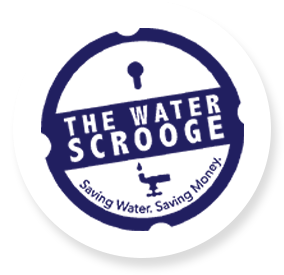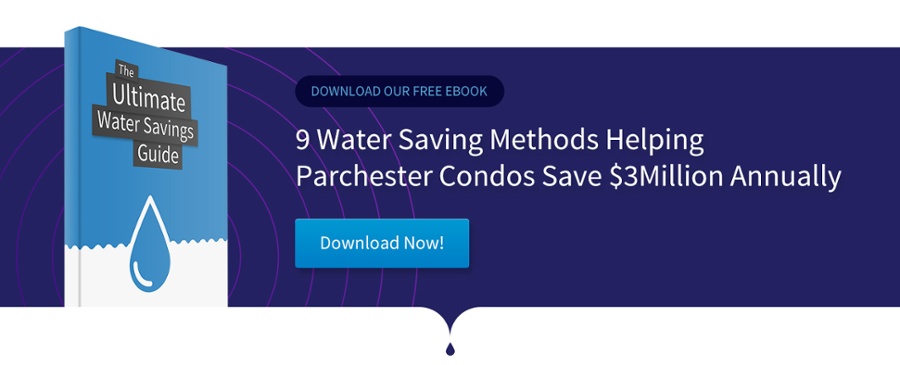3 min read
Water Infrastructure Upgrades: Landlord Preparedness for Rising Costs
![]() David Schwartz
Jul 27, 2016 9:00:00 AM
David Schwartz
Jul 27, 2016 9:00:00 AM

Our nation's water infrastructure needs to be replaced—there is no way around it.
Much like the surprise that comes with being told to replace an old, worn-out engine, we've assumed an "out of sight,
out of mind" approach when it comes to our underground pipes. Sadly, this choice is now costing landlords some serious cash. Especially, right here in NYC where the government has increased the base price of water 131 percent over the past 10 years.
According to the University Neighborhood Housing Program, a Bronx nonprofit that assists and finances affordable housing, water costs on average comprised 13 percent of the expenses in the 34 buildings surveyed. Understandably, landlords of large multi-family buildings are not happy.
"Water is one of the largest expenses we have to operate a building," said property manager Mark Engel in an interview with Citylimits.org. Engel oversees 9,000 units in Washington Heights and the Bronx. "Right now, the cost of water is the same as heating a building. We pay as much for water as we do for oil."
Though it may feel like landlords are being punished, that isn't the case. They are simply the victims of poor planning: Astronomical population growth, inadequate water monitoring, and antiquated building features are all to blame.
The good news? There's a lot landlords can do to decrease the likelihood of substantial future increases in water prices (do expect a hike of 2.97 percent as of July 1, 2016, though). For the rest of this article, we'll explore our best water conservation tips for multi-family building owners.
Install Submeters
It's estimated that 85 percent of multi-residential units in our country are not submetered for water. Unfortunately, this creates a huge problem for property owners who typically have no idea how much water individual tenants are actually using.
In the absence of even the most basic tracking capabilities, landlords are limited to relying on often ineffective tenant conservation programs to keep usage down. Though submetering actually works best in buildings where tenants are responsible for their own water bills, it can still be an effective way to discourage usage. By simply alerting tenants as to exactly how much water they are using each month, you may be able to encourage greater conservation.
If your building is older, installing meters can be expensive and intensive. And in cities like New York, landlords aren't allowed to charge their tenants for water. These two reasons are why submetering isn't always a viable option and why going through the trouble and expense when you can't charge for water makes it a waste of money.
Read more on cost-effective alternatives to sub-metering.
Install Water Regulators
Water regulators are a landlords' best friend! They effectively work to decrease the amount of water flow through faucets and shower heads. Though they may seem as simplistic as throwing on some netting that impedes total water flow, today's designs are actually much more intelligently engineered. The best water regulators will limit flow while still providing a widespread dispersion of water, maintaining a pleasant experience.
While U.S. government regulations stipulate water flow from showers must be limited to 2.5 gallons per minute, the average flow of older showers is 4 gallons per minute. With NYC prices, that translates to a whopping average of $463 for a year of showers. Yikes.
The other water mechanism regulators help control are those leaky faucets. A single faucet dripping once per second wastes 27,000 gallons of water every year. Since tenants rarely, if ever, report drips, there's a good chance you have a few in your current building. Check out our tamper-proof, hidden regulators to get a handle on savings.
Install Wireless Toilet Monitors
A lesser known and arguably more effective alternative to submetering is The Toilet Scrooge. With the touch of a button, you can now have instant stats on everything from the number of fill cycles, flushes per day and times of day used on every toilet in your building.
The unobtrusive device sits near the base of the toilet, electronically reporting live information 24/7. Not only will it say which tenants are using the most water, it will also provide important information that could indicate leakage. Identifying toilet leaks sooner, rather than later, is oftentimes the difference between thousands of dollars wasted or saved. Not to mention, it's really cool! If George Jetson was a landlord he would surely have these gadgets installed on his properties.
Calibrate Toilet Flow
It's estimated that 1 in 5 toilets have a leak at any given moment. That can mean between $120 (for small leaks) and thousands of dollars (for larger leaks) lost per toilet, per year. If you have a 500 unit building, that translates to 25 leaky toilets costing around $3,000 on the low end.
The solution? Toilet flow calibration. By adjusting water tank systems and switching out a couple standard internal components for more durable materials, you can ensure you're experiencing minimal water loss per flush.
Create Tenant Education Programs
Finally, don't underestimate the power of a creative tenant education program. While it would be great if everyone felt compelled to curb usage after hearing how much excess water waste is hurting the city, the environment, and your pocketbook, there will always be some people who simply don't care. But there are many ways you can increase the odds of getting tenants on board, such as:
- Holding anonymous, building-wide competitions that reward the lowest water users;
- Competing with neighboring residential buildings in rewarded competitions;
- Distributing educational refrigerator magnets that won't get thrown in the trash; and
- Writing a thoughtful, heartfelt letter describing why it's important.
The bottom line: Our city's water infrastructure system is in significant distress and landlords of multi-family residential buildings can play a large part in helping solve the problem. For more information about how to achieve serious savings by implementing the above tips, CLICK HERE.


